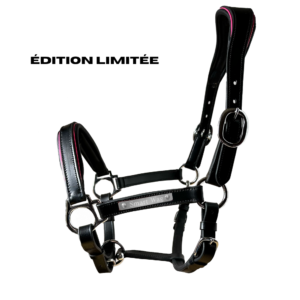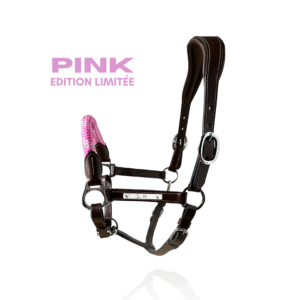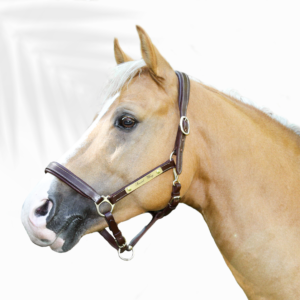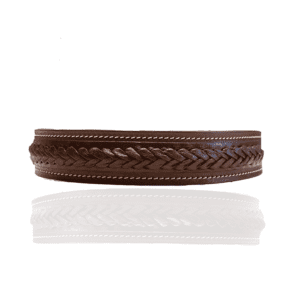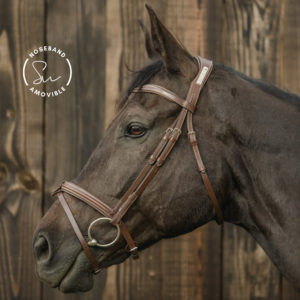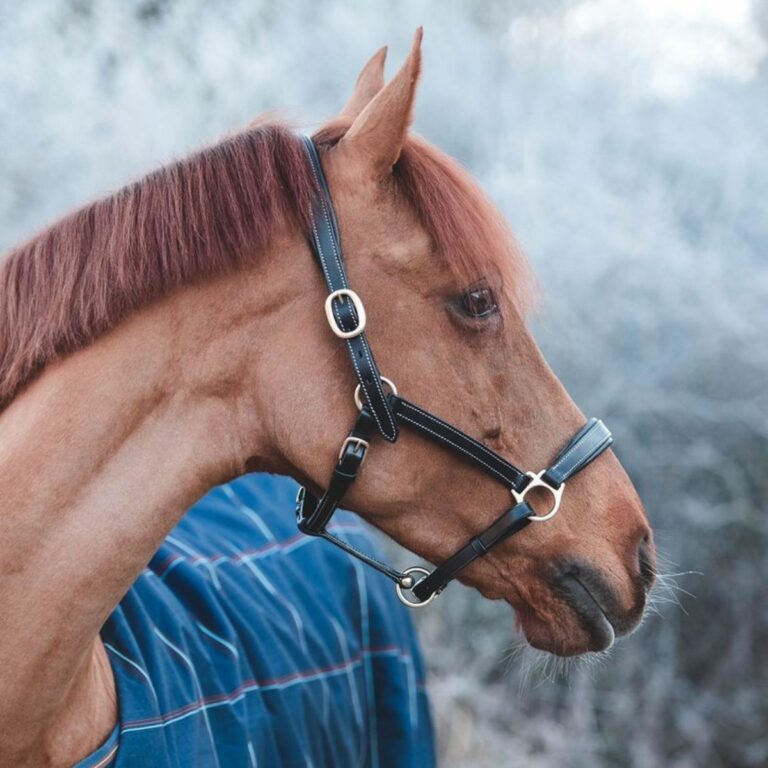
RÉGLER SON LICOL: LES REPÈRES.
Le licol est un élément de style mais aussi un élément de sécurité. Que ce soit à l’attache, durant un transport, ou tout simplement pour mener le cheval en main, il est un lien souvent indispensable entre le cavalier et son cheval.
Comme le licol repose sur la tête du cheval, lors d’évènements mettant le licol sous tension ( gestes brusques de la part du cheval ou du cavalier) , il est important que le licol soit confortable au cheval, et ne lui provoque pas de douleurs. C’est pourquoi il est nécessaire de le choisir à la bonne taille, afin de pouvoir le régler correctement . Un licol mal réglé, c’est aussi un licol susceptible de se casser plus facilement, les points de pressions étant mal répartis.
Choisir la bonne taille de son licol
At Smart Wag, our halters have double adjustment on the headpiece, as well as adjustment possibilities on the noseband and underlay. The only parts that will not vary in size are the uprights between the noseband and the headstall. It is therefore essential to choose the right size en fonction de la longueur de la tête du cheval. Pour prendre connaissances des mesures de nos licols, vous pouvez les retrouver sur le guide des tailles.
Le bon réglage du licol de son cheval
Une fois la bonne taille choisie, il faudra s’assurer de bien régler son licol. En effet un licol trop serré comprimera les tissus de la tête du cheval, qui est particulièrement sensible car innervée en surface.
Un licol au contraire , réglé trop large, sera instable donc gênant, et risquera de faire tomber la muserolle sur l’os nasal si la têtière est réglée trop longue. Cette même raison risquerait aussi de dévier la têtière sur l’encolure, au niveau des premières cervicales, alors que sa place initiale est au niveau de l’atlas du cheval. Cela entrainerait des douleurs à la pression , mais aussi rendrait floues les demandes du cavalier avec la longe.

Comment vérifier qu’un licol est bien réglé ?
Pour bien régler son licol , on peut vérifier plusieurs points :
- L’ajustement de la muserolle.
- Le positionnement de la muserolle
- Le positionnement de la têtière
Les points de repère
- La muserolle : on doit pouvoir passer un travers de main entre l’auge du cheval et la muserolle. Elle doit être placée environ à deux doigts (1,5cm) de l’apophyse zygomatique du cheval. Le réglage la têtière permet les variations de hauteur de la muserolle.
- Les montants : Ils ne doivent pas toucher l’apophyse zygomatique. La boucle qui les relie à la têtière doit reposer sur la joue et ne doit en aucun cas se loger sur la parotide du cheval.
- La têtière : Bien réglée, elle ne glisse pas au niveau des première cervicales. Elle reste derrière les oreilles, au niveau de l’atlas. Qu’elle soit droite ou de forme « anatomique », elle sera choisi en fonction de la morphologie du cheval. Entre une têtière droite ou incurvée, il n’y a pas de formule universelle au confort du cheval. Tout dépend de chaque morphologie.

The last word.
Choosing the right size is essential when buying your halter, but adjusting it should never be an optional extra. A properly adjusted halter will give you and your horse better communication, greater comfort and therefore greater safety.
So don't forget to check regularly that your halter is properly adjusted at the headstall, underlay and noseband to ensure that you and your horse enjoy a more relaxed time together.
Discover the Smart Wag bridle range
-
Horse Equipment
Personalised leather halter Flags- Limited Edition
64.00 € Select options This product has multiple variants. The options may be chosen on the product page -
Horse Equipment
Pinky leather halter - Limited edition
64.00 € Select options This product has multiple variants. The options may be chosen on the product page -
Engraved halters
Licol personnalisable Cuir et Corde – Pink Edition
64.00 € Select options This product has multiple variants. The options may be chosen on the product page -
PRO Halter
Customisable leather halter Exclusif PRO
55.00 € Select options This product has multiple variants. The options may be chosen on the product page -
PRO Halter
Soul PRO customisable leather halter
45.00 € Select options This product has multiple variants. The options may be chosen on the product page -
Leather Collars
Basel leather dog collar
35.00 € Select options This product has multiple variants. The options may be chosen on the product page -
Customisable bridles
New Soul custom bridle
74.00 € Select options This product has multiple variants. The options may be chosen on the product page -
Leather goods
Smooth Leather Wallet
45.00 € Select options This product has multiple variants. The options may be chosen on the product page


